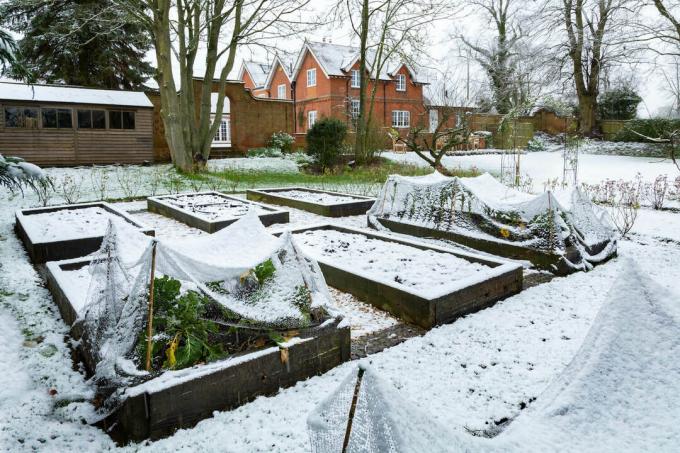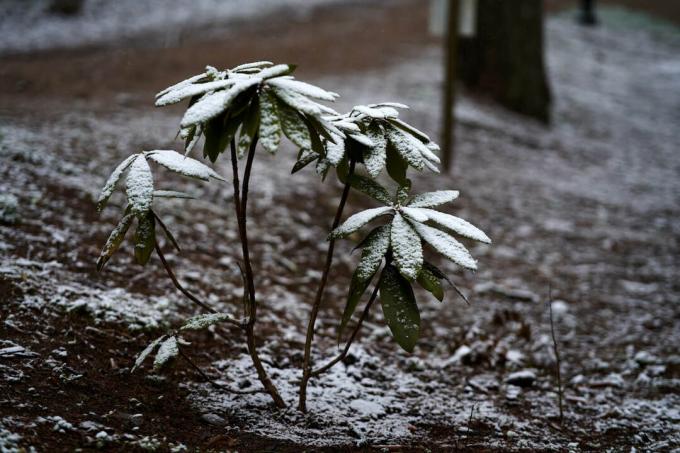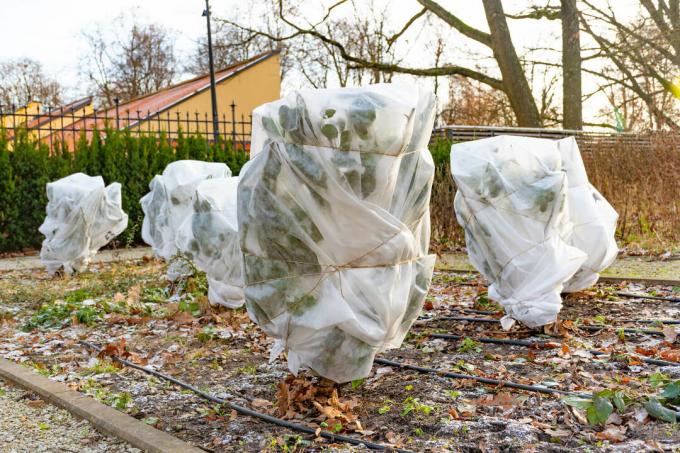There are different winter hardiness zones in Germany. Those who know them can easily find out whether plants can thrive in their own zone in winter or whether they might freeze to death.

In today's plant markets, the choice ranges from domestic chives to the exotic Muriel bamboo and beyond - so we buy greenery from all over the world and plant it on our balcony or in the garden. The purchased plants are originally at home in a wide variety of climates, so they differ in their cold tolerance. That can become a problem. With regard to winter hardiness in particular, the question arises again and again as to whether a specific crop can survive the winter in a specific location. In order to define this for each crop, plants are assigned to different winter hardiness zones. Find out here what winter hardiness zones are, which ones exist in Germany and what they mean for the everyday life of a gardener.
Contents
- What are hardiness zones?
- Which winter hardiness zones are there in Germany?
-
Hardiness zones in practice
- influence of location
- influence of care
- Cold protection recommendations for plants
What are hardiness zones?
Countries and individual areas can be classified in winter hardiness zones (WHZ). The individual areas are divided based on the average lowest annual temperature in the respective zone. Each plant can then be assigned to a specific hardiness zone - depending on the temperature up to which it can survive without suffering damage.
The first classification into hardiness zones was created by the US Department of Agriculture - the USDA hardiness zones. A system was used that divides the USA into hardiness zones from 1a to 13b. Zone 1 is assigned to polar regions and zone 13 to tropical regions. For example, if an area is assigned hardiness zone 7a, the lowest temperatures in that area average between -17.7°C and -15°C.
Based on this, a further classification into winter hardiness zones was made. This divides the world into 11 hardiness zones ranging from Z1 to Z11. The "Z" simply stands for "Zone".
- Z1: Below -45.5°C
- Z2: -45.5 to -40.1°C
- Z3: -40.1 to -34.5°C
- Z4: -34.5 to -28.9°C
- Z5: -28.8 to -23.4°C
- Z6: -23.4 to -17.8°C
- Z7: -17.8 to -12.3°C
- Z8: -12.3 to -6.7°C
- Z9: -6.7 to -1.2°C
- Z10: -1.2 to +4.4 °C
- Z11: Above +4.4 °C
Which winter hardiness zones are there in Germany?
The winter hardiness zones in Germany range from 6a to 8b.
- 6a: -23.4 to -20.5 °C
- 6b: -20.4 to -17.8 °C
- 7a: -17.7 to -15°C
- 7b: -14.9 to -12.3 °C
- 8a: -12.2 to -9.5°C
- 8b: -9.4 to -6.7 °C
Most of Germany belongs to winter hardiness zone 8a, so the lowest average temperatures of -12.2 °C to -9.5 °C prevail here. This includes areas such as the Rhineland, the coastal regions of Lower Saxony, Schleswig-Holstein and Hamburg. In the south-east of Germany the WHZ is mostly at 7a and 7b, in the north-west it is more at 8b. The Alpine region in Germany is assigned to zones 5 to 6 and the high Alps to climate zones 4 to 5. In the high Alps, the average lowest temperatures are between -34.4 °C and -23.4 °C.

Tip: In the course of climate change, one can assume that the winter hardiness zones in Germany have tended to increase.
Hardiness zones in practice
Ultimately, like most classification systems, assigning plants to hardiness zones only serves as a guide. Winter hardiness cannot be defined as an absolute value, as it depends on other factors. In addition, the winter hardiness zone only says something about the frost hardiness of the plant in general, although, for example, blossom frosts can still occur.
influence of location
It is important to note that there are pronounced early or late frosts that can jeopardize the success of the winter. So it can help to learn about the characteristics of the local climate in order to choose the right winter protection.
Apart from the large-scale climate, the microclimate has an important influence on the survival of a plant. This is how the climate is described up to about 2 m above the ground - and this can differ significantly from the regional climate. For example, if a crop that is sensitive to cold is in the open field in a cool region, it is exposed to a different microclimate than if it is protected from the wind against a house wall. Accordingly, plants that are somewhat sensitive to cold can also be placed in cool winter hardiness zones if the site conditions are right.

influence of care
Location aside, proper care plays a big part in winter hardiness. If you want to overwinter plants outside, you should always avoid waterlogging so that the roots do not freeze completely. Accordingly, there is generally a little less watering in winter. Starting around August, you should no longer fertilize with a normal fertilizer so that no new young shoots are formed that can easily freeze. Instead, potassium fertilization in the fall helps increase frost resistance. Here, for example, a special autumn fertilizer like ours Plantura Organic Autumn Lawn Fertilizer be used. In addition, freshly planted plants often do not survive the winter - so it is better to plant in spring or summer.

Organic autumn lawn fertilizer 10.5 kg (bag)
- Ideal for lawn fertilization from July to October
- Ensures maximum winter hardiness & rapid regeneration in spring
- Animal-free organic slow-release fertilizer - safe for pets and garden animals
Cold protection recommendations for plants
Crops whose assigned hardiness zone is lower than that of their own location need winter protection. For example, if you have a plant that is assigned to WHZ 9a but you live in the Rhineland - WHZ 8a - then it probably needs winter protection to Frost damage to plants to avoid. One can roughly say that plants that are assigned a WHZ higher than 6a should be protected in Germany in winter. This winter protection can then vary, depending on how big the difference between location and WHZ is. Planting a plant in the same WHZ it belongs to is no guarantee that the Plant survives the winter safely - as mentioned above, improper care can also be fatal become.

Notice: Note that cultures grown in tubs or pots outside have a reduced chance of surviving the winter. Here the roots can freeze faster because they are surrounded by less insulating soil.
In winter it is often important protect plants from frost. In our article you will find tips and tricks on how to best implement this.
Register now for the Garten-Post and receive great tips, seasonal trends and inspiration on everything to do with the garden from our expert every week.


